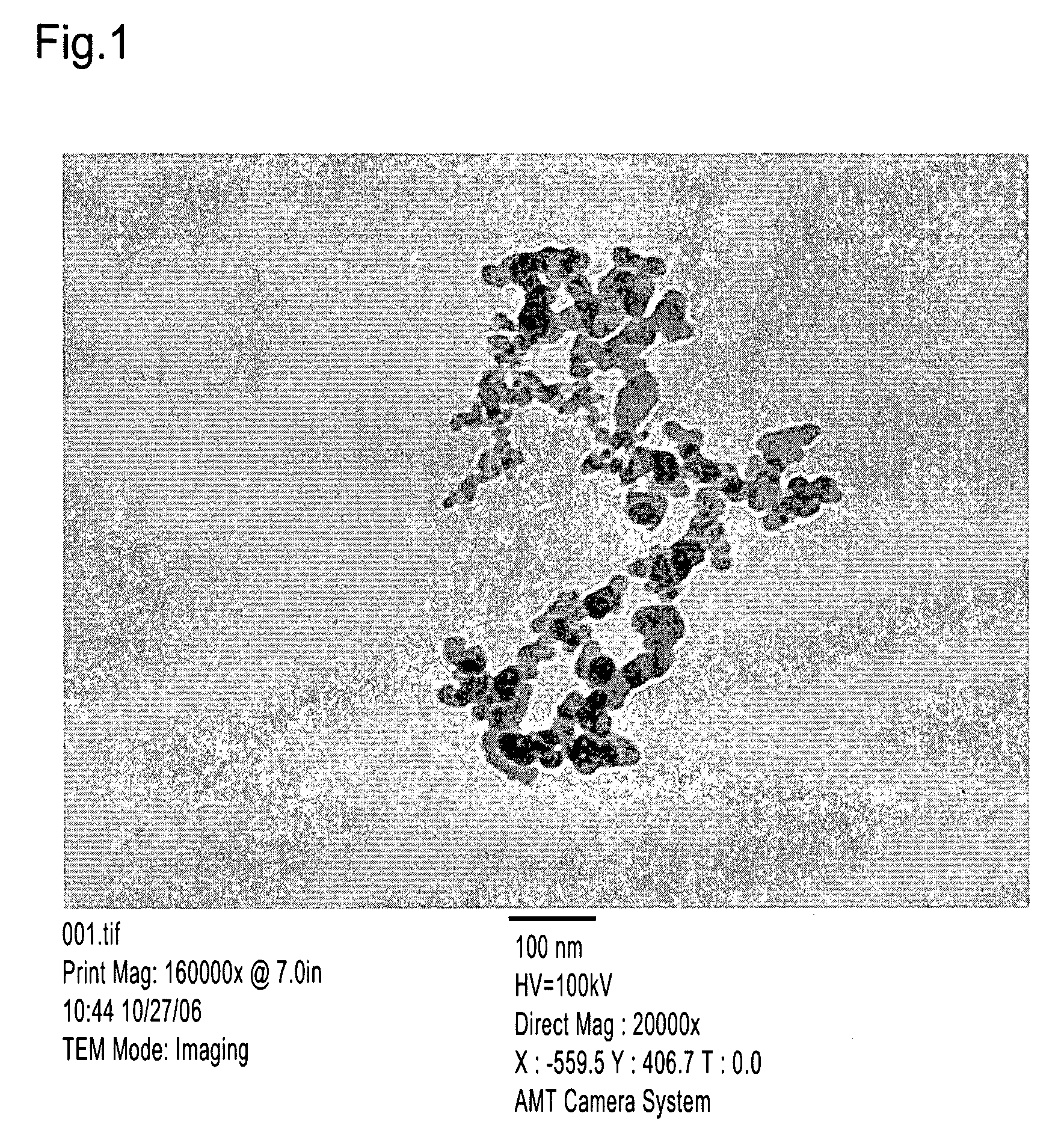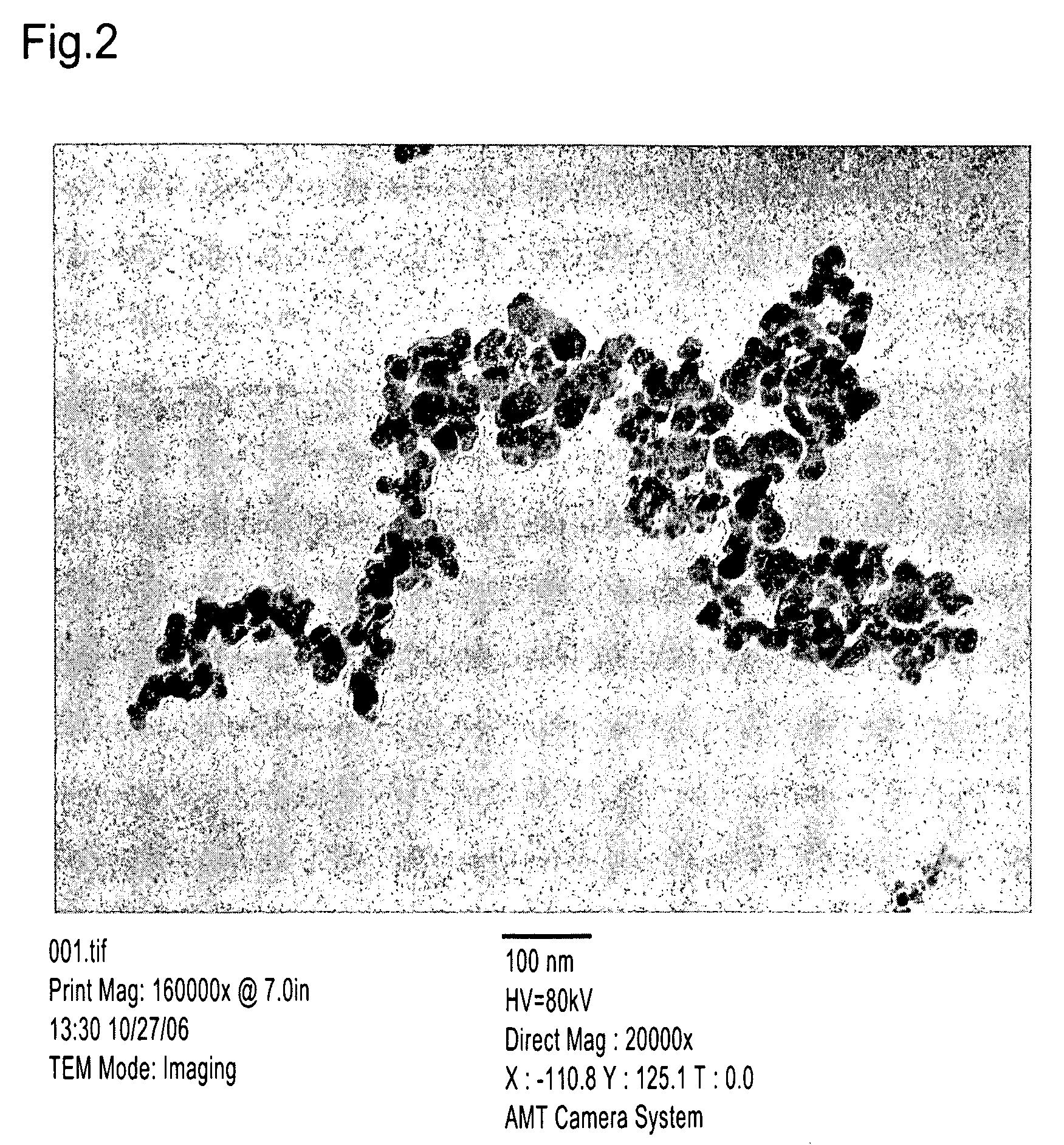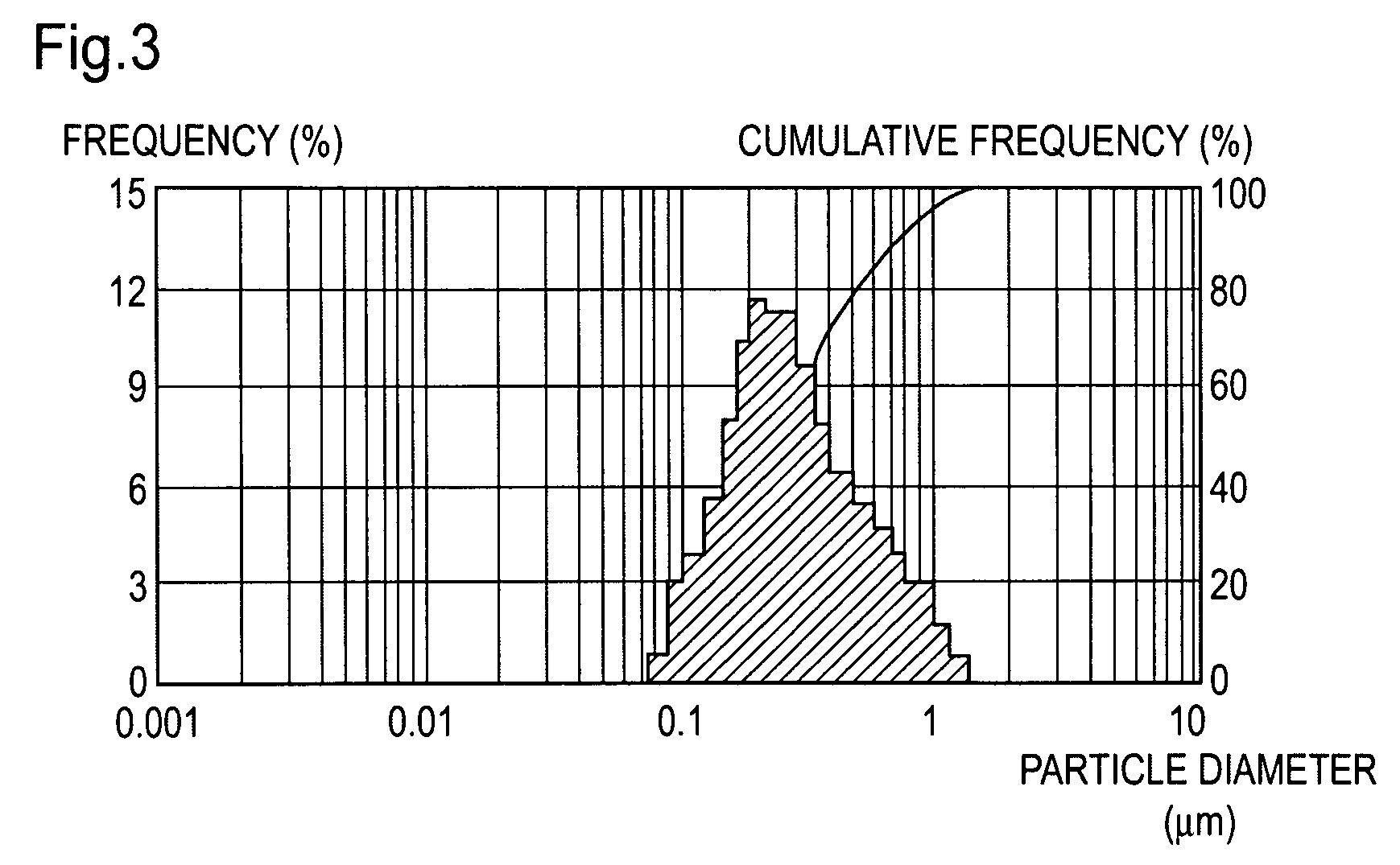Composition for polishing semiconductor wafer, and method of producing the same
a technology of semiconductor wafers and polishing methods, which is applied in the direction of manufacturing tools, lapping machines, other chemical processes, etc., can solve the problems of affecting the yield and quality of semiconductor products, scratching easily on the polished surface, and contaminating a surface subjected to high-precision processing, etc., to achieve excellent polishing ability
- Summary
- Abstract
- Description
- Claims
- Application Information
AI Technical Summary
Benefits of technology
Problems solved by technology
Method used
Image
Examples
examples 3 to 7
[0095]Preparation of Slurry C: Slurry A1 was Mixed with commercially available colloidal silica particles (Silicadol, silica concentration: 40 weight percent, manufactured by Nippon Chemical Industrial Co., Ltd.) having a particle diameter of 50 nm and purified water at mixing ratios shown in Table 1, thus allowing Slurry C1 to Slurry C5 (Examples 3 to 7) to be prepared.
[0096]Table 2 summarizes physical properties of each of the slurries prepared as described above.
TABLE 1ColloidalPurifiedA1sillicawaterSilicaParts byParts byParts byconcentrationSlurry Cweightweightweightwt %C111.250.7525C211.500.9025C312.001.2025C413.001.8025C515.003.0025
TABLE 2AverageSilicaBET specificparticleconcentrationsurface areadiameterSlurrywt %pHm2 / gA / BnmA02510.23955266A1259.061291.523.2B0209.65143535.3B1209.041701.538.7C12510.1C22510.0C3259.9C4259.8C5259.8
[0097]Each of the silica slurries was diluted with purified water to a predetermined silica concentration. Chemicals shown in Tables 3 and 4 were then ad...
example 33
A Grinding Example in which a Slurry is Passed Through a Bead Mill Twice Using Beads Having a Diameter of 0.1 mm
[0124]Tetramethylammonium hydroxide was added to 75 parts by weight of purified water in an amount of 0.15 mol relative to 1 kg of silica, and mixing was performed under stirring. Subsequently, 25 parts by weight of the same fumed silica particles as those used in Slurry A of the above examples (BET specific surface area: 90 m2 / g) were added to the mixture and dispersed by agitation. Thus, a slurry containing 25 weight percent of silica was prepared. The pH of this slurry was 10.23, and the BET specific surface area of the silica particles in the slurry was 95 m2 / g. The average ratio A / B of the major axis A to the minor axis B of the silica particles measured by TEM observation was 5. The average particle diameter measured by the laser light-scattering method was 266 nm.
[0125]Subsequently, this slurry was ground with a bead mill (LMZ 2: manufactured by Ashizawa Finetech Lt...
example 34
A Grinding Example Using Beads Having a Diameter of 0.2 mm
[0126]Tetramethylammonium hydroxide was added to 75 parts by weight of purified water in an amount of 0.15 mol relative to 1 kg of silica, and mixing was performed under stirring. Subsequently, 25 parts by weight of commercially available fumed silica particles (BET specific surface area: 90 m2 / g) were added to the mixture and dispersed by agitation. Thus, a slurry containing 25 weight percent of silica was prepared. The pH of this slurry was 10.23, and the BET specific surface area of the silica particles in the slurry was 95 m2 / g. The average ratio A / B of the major axis A to the minor axis B of the silica particles measured by TEM observation was 5. The average particle diameter measured by the laser light-scattering method was 266 nm.
[0127]Subsequently, this slurry was ground with a bead mill (LMZ 2: manufactured by Ashizawa Finetech Ltd.) using zirconia beads having a diameter of 0.5 mm as a grinding medium at a slurry fl...
PUM
| Property | Measurement | Unit |
|---|---|---|
| specific surface area | aaaaa | aaaaa |
| particle diameter | aaaaa | aaaaa |
| diameter | aaaaa | aaaaa |
Abstract
Description
Claims
Application Information
 Login to View More
Login to View More - R&D
- Intellectual Property
- Life Sciences
- Materials
- Tech Scout
- Unparalleled Data Quality
- Higher Quality Content
- 60% Fewer Hallucinations
Browse by: Latest US Patents, China's latest patents, Technical Efficacy Thesaurus, Application Domain, Technology Topic, Popular Technical Reports.
© 2025 PatSnap. All rights reserved.Legal|Privacy policy|Modern Slavery Act Transparency Statement|Sitemap|About US| Contact US: help@patsnap.com



